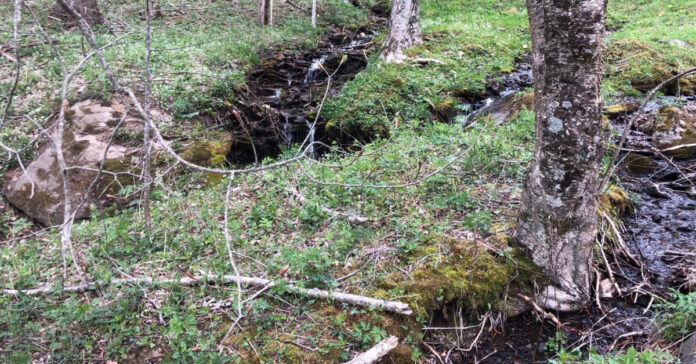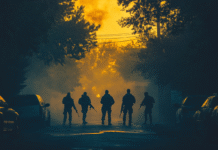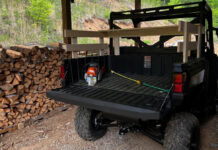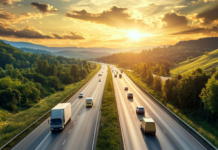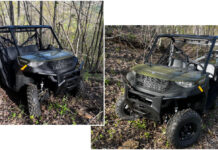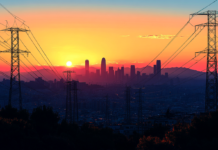I am not rich, but when it comes to water, I am wealthy. In fact, I am so wealthy that I discard at least 800 gallons of pure drinking water every day.
163 feet above my head, a black plastic pipe sticks out of the ground. For much of the day, water trickles out of it at the rate of about 1 gallon every 90 seconds. That’s almost 1,000 gallons of water that I discard every day. It splashes out on the dirt, runs down the hill, and some of it gets absorbed by the ground. The rest of it ends up in a creek.

Where does this pipe and that water come from? The water seeps from the ground halfway up the mountain behind my house, where it is collected behind a man-made dam and funneled into the pipe. Then it flows down 800 feet of pipe into a cistern that provides water pressurized water supply to my home. When the cistern is full, the overflow or excess water runs out of the pipe, as described above. When we flush a toilet, water from the cistern fills the toilet tank, dropping the water level in the cistern. The overflow ceases for three or four minutes until as cistern fills back up. The cistern is full most of the time, even on days when we run a few loads of laundry.
Our spring has never run dry. It doesn’t require electricity to pump it. No one charges me for the water, and I have full rights to use the water however I see fit. There are people in California, New Mexico, Nevada, Arizona, Colorado, Utah, Texas and other dry states who wish they had this kind of water resource. The UN estimates there are more than a billion people who have to travel more than 30 minutes to get clean water. From their perspective, I have am wealthy indeed.
Running Water Means Civilization
A steady, off-grid water supply is incredibly valuable to a prepper. You won’t know how dependent you are on running water until you don’t have it. (Our system freezes in the winter, so we get an annual reminder.) You hit the toilet lever, and nothing happens. You press the lever on your refrigerator door with your glass, and no water comes out. Now what? Now you better hope you have some stored water or an alternate source.
We have both. Our alternate sources are two fast-moving creeks on our property (one of which is pictured above) and a third just across the property line. Of course, we have to gather our five-gallon jugs, throw them in the wagon, wheel on down to the stream, fill them up and wheel it back. Then we have to carry the water vessels to the kitchen and bath. Not as nice as turning the tap. If we need to drink this water, we must run it through our Katadyn counter-top filter. It’s a workable solution in a survival situation, but it will make you miss running water. For that reason, I keep a pipe repair kit on hand.
Water is not only Wealth but Health
There is a reason the Big Three of Survival are food, water, and shelter; they are all critical to sustaining life. You may have heard the rule of three: you can live three weeks without food, three days without water, and three minutes without breathing. In my opinion, that’s pretty generous. You’re better off with much greater frequency!
With nothing to drink, you will be pretty miserable after one day. You’ll be alive, but your performance will decline until you aren’t much use to anyone. When dehydration sets in, you start to cramp, you get fatigued, your head hurts, and then you get light headed or dizzy. After 36 hours, your concentration lags, your short-term memory lapses, and you feel like crap. As more time passes, you get heart palpitations and your blood pressure drops. Finally, you enter an altered mental state. In a prepping situation; you won’t be good for much without proper hydration. You won’t have good judgment or be able to do much work.
When it comes to prepping, make sure your preps include multiple water sources and multiple methods of purification because drinking surface water without purification is a good way to get sick. Drinking contaminated water can cause cholera, dysentery, typhoid and other devastating illnesses. In fact, one reason watered wine was so popular in the Greek and Roman civilizations is because the alcohol would help purify unclean water.
Whatever you do post-SHTF, poop far from your water source or at least well downstream from where you get your water. And when you bug out, carry plenty of water plus water purification devices and tablets.
Sanitation
When you mention sanitation, most people think of toilets and sewage. Keeping human and animal feces out of your water supply is indeed important, but don’t overlook the value of using water to clean things post disaster. The recent pandemic did wonders for hand washing, raising it to new levels. Let’s not overlook the benefits of washing the rest of our bodies. If a day of chopping wood, patrolling the region, or working in the garden leaves you with a bad case of swamp ass, cleaning those cracks and crevices can go a long way towards preventing chafing, a fungal infection, and other skin conditions. Yes, soap and water are the best solution, but water alone is better than nothing, especially if you allow yourself to dry in the bright sun so the UV rays can kill any remaining microbes.
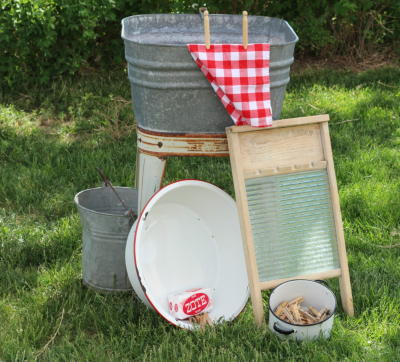
We take dishwashers and laundry machines for granted, but they are both dependent on both running water and electricity. Washing the dishes and scrubbing food preparation areas both now and post-SHTF will help prevent the transmission of diseases from person to person and reduce the chance of food poisoning. Washing clothes not only removes stains and smell but it helps them last longer. Dirt that is built up in and among the fibers can cause excessive wear and degradation. After a disaster, we’re going to want our clothes to last, even if washing them means beating them with a rock in a stream.
Killing Germs
Our modern understanding of germ theory and how to kill bacteria and viruses sets us apart from the best minds of the 1800s. We can use that knowledge to clean wounds, prevent infection, stop the spread of disease, and prevent diarrhea, food poisoning, and other common ailments.
Have some bleach on hand (or the crystals from a pool supplier that can make sodium hypochlorite, the active ingredient in bleach). It is an excellent disinfectant. It can also purify water from questionable sources. The amount I see most often is 8 drop per gallon. Shake or stir the water and then let it sit for at least 30 minutes.
If you have no mechanical or chemical methods to purify water, boiling water will kill bacteria, viruses and even protozoa. The CDC considers it the surest method to kill disease-causing germs. Let the water reach a rolling boil for at least one minute. Then cool and store in a clean container.
Note that neither boiling nor using bleach will remove chemicals, radioactive particles, or other contaminants from your water.
Plan Now for your Water Needs
If you are not “water wealthy,” you need to have a plan to address your water needs after a disaster. Stocking bottled water might be OK for a hurricane, but it won’t be sufficient in a large-scale, long-duration disaster. If you plan to rely on a water source within walking distance, make sure your plan includes vessels in which to carry the water and a method to transport the water that does not rely on gasoline. For example, we are using 5-gallon jugs and a garden cart that looks like a kid’s wagon on steroids. It can transport 15 gallons (120 pounds) at a time and be pulled by one person. Today, these items are available in the camping aisle and a garden center. After a disaster strikes, items like this will be in short supply. Don’t wait until the collapse is here to look for water filter elements.
If you must source water from a public or highly visible location, think how you will protect yourself or provide security for others in your party as they collect water. Wild animals aren’t the only ones stalking the watering hole.

